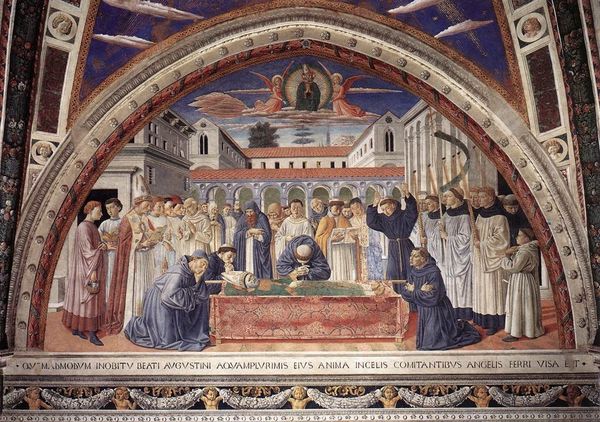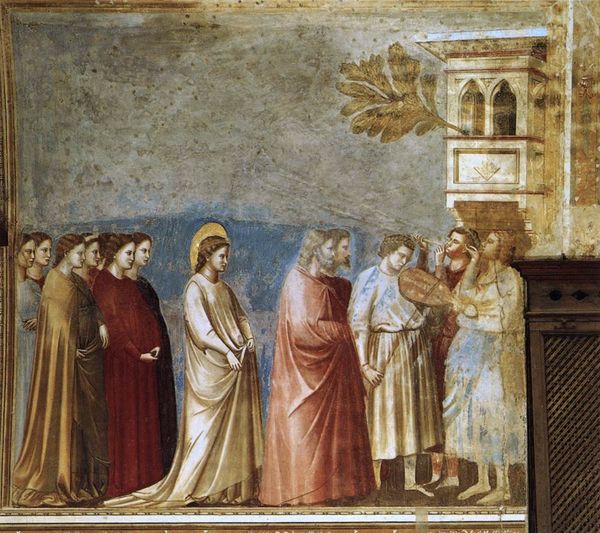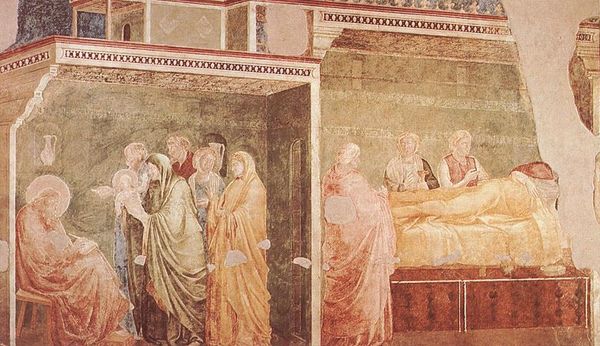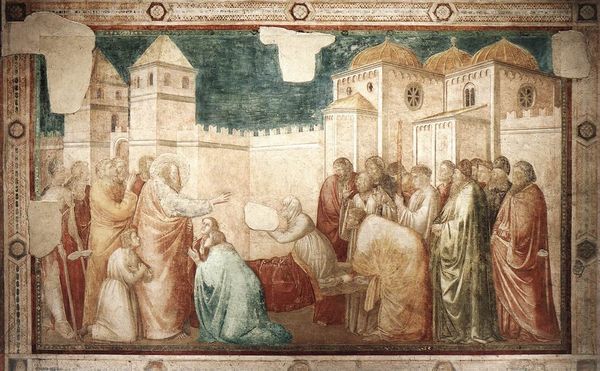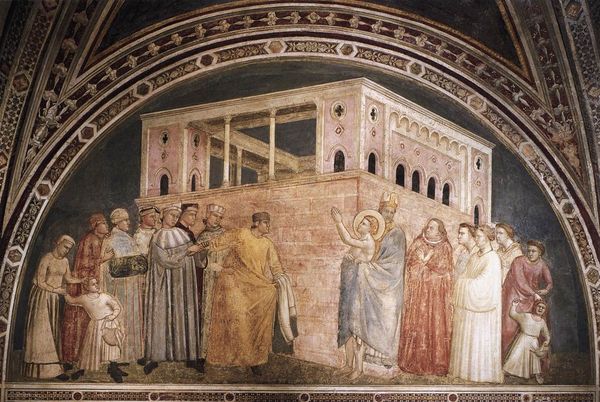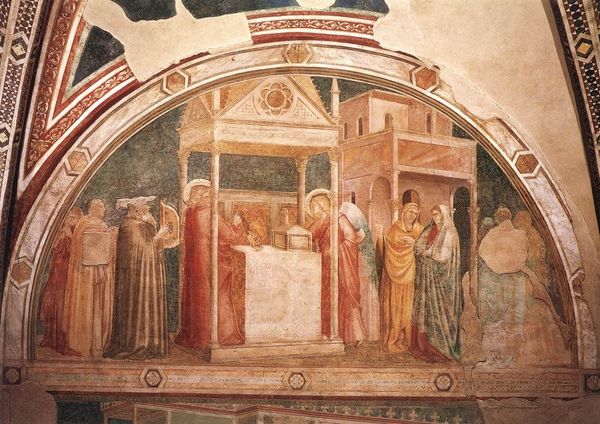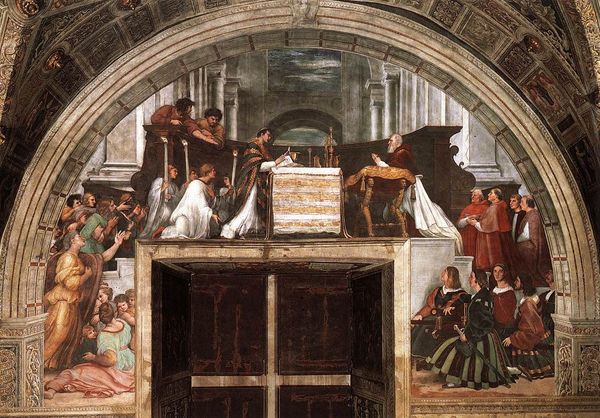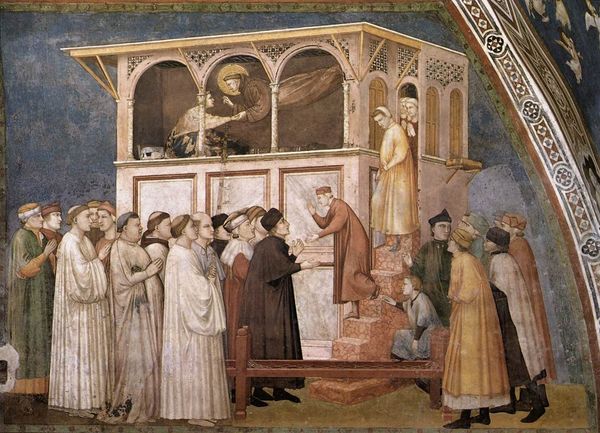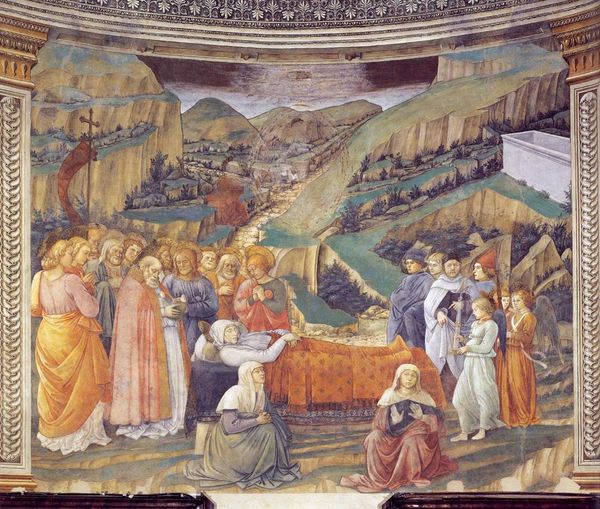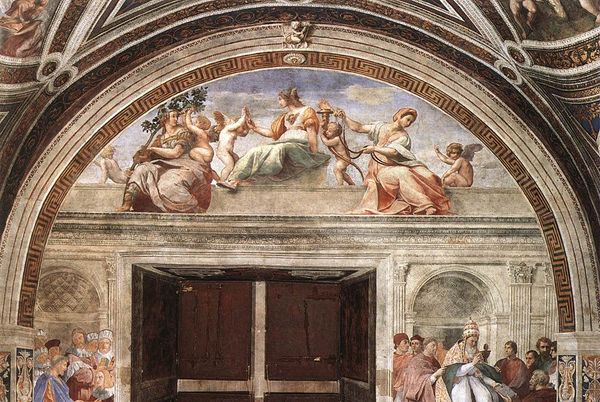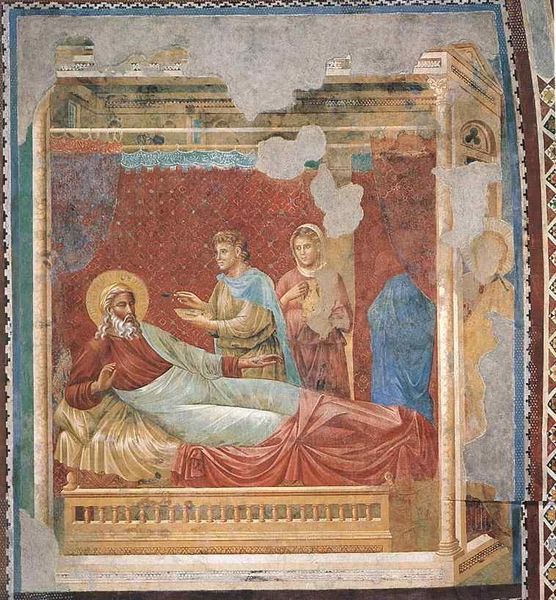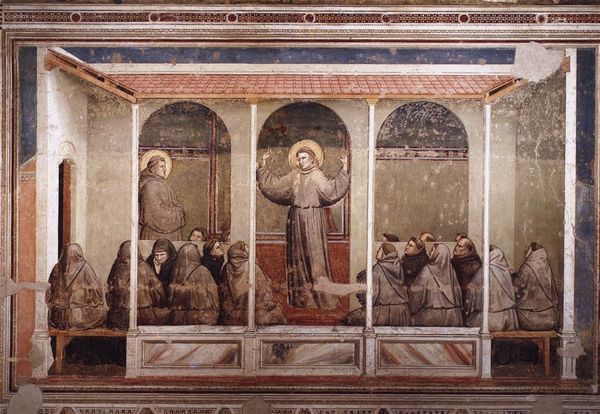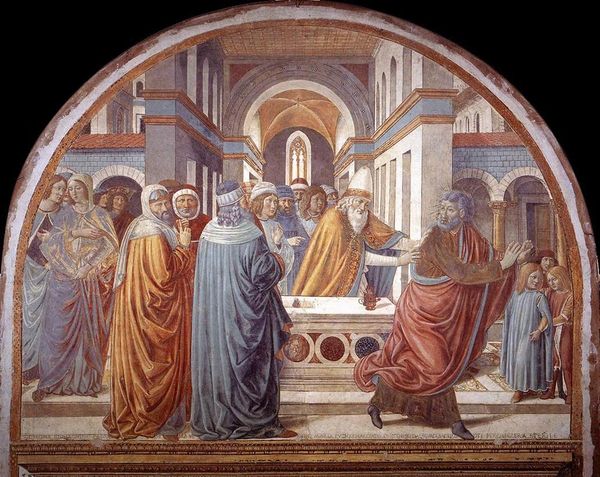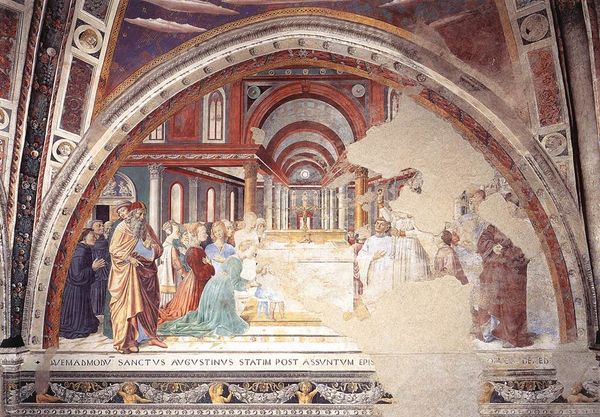
tempera, painting, fresco
#
portrait
#
medieval
#
narrative-art
#
tempera
#
painting
#
gothic
#
figuration
#
fresco
#
christianity
#
painting painterly
#
history-painting
#
italian-renaissance
Dimensions: 280 x 450 cm
Copyright: Public domain
Editor: So, here we have Giotto's "The Death of St. Francis," a fresco from around 1325. It's incredibly moving to see so many figures gathered around St. Francis, almost like a stage production. How do you interpret the symbolism at play here? Curator: Look closely at how Giotto arranges the scene. Saint Francis lies in the center, drawing everyone's attention. Above him, a choir of angels waits – that's divine acceptance and a clear signal to viewers. But notice the details on the faces of the brothers around him; each one represents a different aspect of grief, of spiritual acceptance. Editor: That’s a great point about individual grief. Does the presence of the angels lessen the sadness, or amplify it somehow? Curator: The angels serve as more than simple comforters; they act as visual assurance of St. Francis's sanctity, emphasizing a transition from earthly life to heavenly reward. But consider – does this focus on St. Francis elevate him to a Christ-like figure within the order's imagery? Editor: It really does seem to portray St. Francis as almost a second Christ. And by extension, it suggests an aspiration for his followers. The painting is a vivid display of not just the event, but also its meaning to them. Curator: Precisely. Remember the period. This was the Early Renaissance, a move towards naturalism but still heavily laden with symbolic language understood by the devout. Consider the gazes, the gestures. These carry psychological and theological meaning. And, together, all the images contribute to the collective cultural memory surrounding St. Francis. Editor: Seeing it laid out this way brings new life to a historical moment, it provides emotional and historical insight. Curator: Indeed, Giotto uses a single moment to condense faith, memory and enduring iconography.
Comments
No comments
Be the first to comment and join the conversation on the ultimate creative platform.
